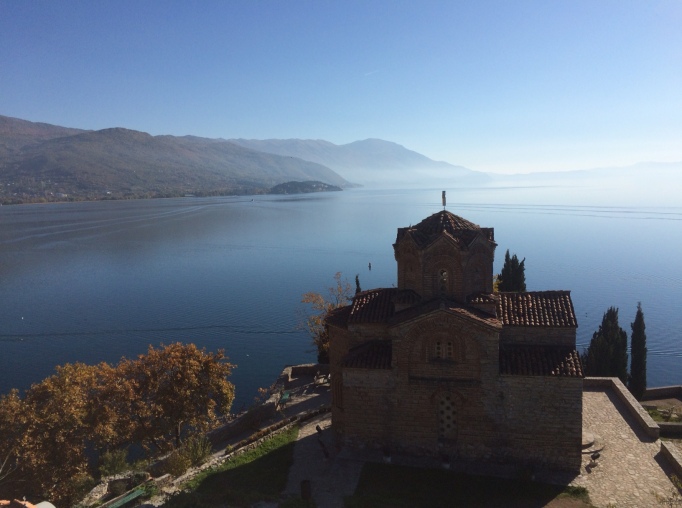Even though every country and each city had its own charm, there are a few reoccurring themes in the Balkans.
- Stray dogs and cats: They are everywhere, some happy, some miserable, some fed, some not, and even some that have been neutered and then re-released. Some people who have pets and don’t feel like keeping it, or move away, sometimes leave them behind, and other animals are born in the streets, leaving the cutest puppies and kittens to pull on your heart strings and make you wish you could take them all home.
- Food and mealtime: Breakfast is pretty straight forward, usually a combination of some bread and a yogurt drink, but lunch is the meal you eat after work at 5pm and some just skip dinner altogether. Everyone has a variation of burek/banitza and cevapi, aka kebab as a fast food staple, and cheese and these huge white beans can be added to nearly any hot meal.
- Turkish influence: all the Balkan countries were once under Ottoman rule, and they’ve still left their mark hundreds of years later. Doner is everywhere, Turkish coffee is as common as espressos, and tea served in small cups with a slice of lemon is called Turkish tea. The markets are often called Bazaars, and a lot of words in their vocabulary are Turkish.
- Fresh produce and homemade goodies: every market sells goods that follow the seasons, with tomatoes in summer to pomegranate in the fall, chestnut roasters closer to Christmas, and once in a while some Japanese apples. Every village and even each home in the right climate will grow their own grapes, make their own wine and rakia, and others have beehives and make the most delicious honey.
- Exchange rates: I could only use the euro in, strangely enough, Kosovo, and Montenegro, and everywhere else had their own type of denar/dinar or lei/lev/lek. But none of the rates are that similar, so sometimes you pay in the fives and tens, and sometimes in the tens of thousands.
- Tourist sights: My days have consisted of walking around pedestrian city centers, monasteries in or on top of rocks, and beautifully painted Orthodox churches. The frescoes never get old to stare at, and the places they put some monasteries, hundreds of years ago, makes me wonder how the heck they built them there. There are usually some mosques and fortresses as well, not a bad bonus.
- Pollution: the cities in the Balkans are some of the most polluted cities in Europe, including Skopje, Sarajevo, Varna and Bucharest. I only really noticed it in the first two, but I definitely noticed my first breath of fresh air I took every time I reached the mountains again.
And there were a lot of mountains to pass to travel overland in the Balkans, and they were always a delight, and I still can’t decide if it was better to see them still in full bloom in October, gold and red when autumn arrived, or snow covered pines in my last week. I guess a mix of all three was the best, so I don’t regret traveling the Balkans now, even though everyone has persuaded me to come back in the spring.












